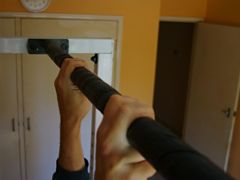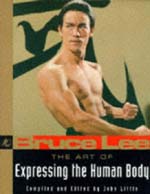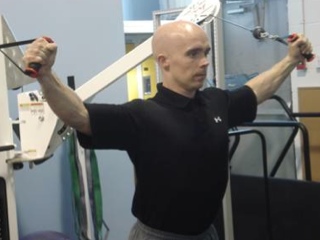 Gem From The Vault : Making Your Own Gym Equipment – DIY Grip Tools
Gem From The Vault : Making Your Own Gym Equipment – DIY Grip Tools
Scott Andrew Bird
Build your own. Looking At : Sep 17, 2023
Looking At : Sep 17, 2023
Scott Andrew Bird | follow @scottbird
What’s been going on this week? Quite a lot actually.
Over to you. I’d love to hear what you think : leave your comments on the above articles, and share them with your friends/colleagues/clients and so on.
NB : if you’re keen to do a little fitness writing and would like to submit your own piece for Straight to the Bar, get in touch.
Video : How Your Body Really Burns Fat – Can We Control It? (Institute of Human Anatomy)
Wonderfully thorough.
Gymchat 278 – TBA
We’re still finalising the details for this week’s discussion. I’ll post them on the blog (and Twitter, Facebook etc) shortly.
In the meantime, take a look at some of the previous episodes of the show – (there’s an example below, and a full list here). And if you’ve got any questions or comments on the various topics discussed, we’d love to hear them. Just leave a note below the video.
Previously : In Gymchat 240 we discussed Periodization with Strength Coach Karsten Jensen, joined by Personal Trainer (and Strength Athlete) Josh Hewett. Great conversation.
And if you missed it the first time (or just want to go over a particular point again), check out the full video :
https://straighttothebar.com/2014/03/20/video_for_gymchat_240_-_periodization_karsten_jensen/ .
NB : If you’d like to take part in a future episode – either as an interviewee, or as a guest host – just drop us a line. Love hearing how everyone else trains.
Checking Out : Innodigym P1 (Smart Home Gym)
Nice and compact.
We’ve looked at several Smart Home Gyms over the years, and the Innodigym P1 plays a similar role to many of them. Ideal for a quick workout when travelling.
It’s a fairly straightforward setup. A little video :
The Innodigym P1.
Ever Tried Kettlebells?
If you've seen people using them but never taken the plunge yourself, here are the ones I use personally. You can also pick up a book/DVD/course if you want to learn how to put them to work.
Tip of the Week : Addressing Squat Weaknesses – Bending at the Knees First
Each week we publish a number of tips and techniques via Twitter, the blog; and the newsletter. Wherever you are, there’s always a way to improve what you’re doing.

When it comes to the squat, Powerlifter Rick Walker clearly knows what he’s talking about.
If you’ve ever tackled this wonderful exercise yourself and felt that your form just didn’t feel quite right, check out his article Addressing Weaknesses in The Squat. To give you an idea of what it’s all about, here’s how he corrects one of the more common problems found in squat technique – the simple act of Bending at the Knees First.
Over to Rick.
This is a common problem among many beginning squatters as the lifter is usually afraid of falling backwards with the weight. Instead of sitting back first, the lifter will bend at the knees to go down. This causes the knees to go forward well over the toes and often times causes the lifter to go up onto their toes in the hole. This is not only dangerous, but you are limiting how much you can squat. The pressure on the patellar tendons in this position is tremendous and leads to big time problems down the road.
Yes, some lifters, especially Olympic lifters, can adapt to these kinds of stresses from having their knees that far forward.
However, the goal here is to improve the squat and move more weight, and that will be accomplished by sitting back into the squat.How to fix it
The lifter must learn to sit back and not down. This can take a long time to get them to do, and even longer to get them to do it under maximum loads. I start all newbie squatters on a box.
I use a very high box and a very light load, usually the empty bar with some light JumpStretch© bands attached for tension. The basic commands I give are for the lifter to sit back like he is searching for a chair that is behind him. Once the lifter can get down to the high box by sitting back, I lower it an inch and start all over. Eventually the lifter will be able to sit back to a parallel box and the movement will become second nature.
Another possible reason for the lifter’s inability to sit back is hamstring strength. If the lifter has weak hamstrings, he won’t be able to sit back into a squat without falling. It gets much worse as the weight increases. To address this, get the lifter on the glute-ham machine pronto!
This is the best way to bring up lagging hamstrings and prepare the lifter for handling more weight in the squat correctly. I have also found Romanian Deadlifts and reverse hypers to be effective for improving the sit back portion of the squat.
And yes, I can assure you that it works. Cheers, Rick.
Exercise Of The Week : 2-Finger Pull-Ups
 I love these things. As you can see, it’s exactly what the name suggests – a pull-up performed using only 2 fingers from each hand.
I love these things. As you can see, it’s exactly what the name suggests – a pull-up performed using only 2 fingers from each hand.
Although I’ve never tried rock climbing, these are often known as Climbers’ Pull-ups; and a couple of climb training techniques will come in handy. The training tool you’ll need is known as a Fingerboard.
Fingerboards don’t have to be fancy to be effective (the picture here shows the one regularly used by climbing coach Dave McLeod); although there are various commercial offerings if you prefer. Dave discusses the use of a fingerboard here; Moonclimbing also has some great information on this type of training.
Why would you want to do this?
Finger strength. You can never have too much. You’ll also give your hands and forearms generally a good going over. If the hangs and pull-ups are out of the question at the moment, keep in mind that you can use bands to support some of your weight and make things a little easier. Temporarily, of course.
Further reading/viewing
Neil Mathewson demonstrates a couple of 2-finger pull-ups above, Campusing. And you thought the fingerboard was hard work.
Incidentally, if you’d like to get in touch regarding this or any other aspect of strength, you can contact me here. Look forward to hearing from you.
Fitness Reading/Listening For The Week : ‘Genentech: The Beginnings of Biotech’ (by Sally Smith Hughes)
It’ll come as no surprise that we discuss a lot of fitness-related books, courses & podcasts; on this site as well as the various networks noted in the sidebar.
Although this one’s a few years old now (I missed it the first time, and stumbled upon a copy recently), it’s certainly thorough. ‘Genentech: The Beginnings of Biotech‘.
Incidentally, I’m always looking to add to the ‘books to read‘ list. If you’ve come across something which you’d love everyone else to check out, drop me a line.
There’s also a list of our all-time fitness suggestions over there. Dive on in.





